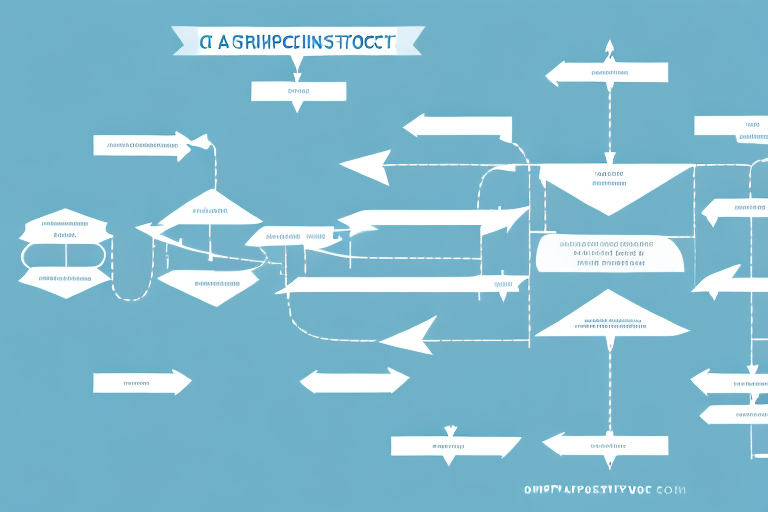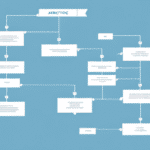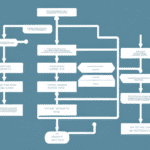Importance of Shipping Process Flowcharts for Daily Deal Businesses
The success of Daily Deal businesses hinges significantly on the efficiency of their shipping processes. Managing a high volume of orders and shipments necessitates a well-defined and streamlined shipping process capable of handling thousands of orders daily. One effective method to ensure smooth operations is by creating a shipping process flowchart that maps out each step in detail.
Enhancing Operational Efficiency
A shipping process flowchart helps businesses identify and eliminate bottlenecks, reducing shipping errors and delays. According to the Investopedia efficiency definition, improving operational efficiency can lead to higher customer satisfaction and increased sales.
Managing Inventory Effectively
By tracking product movement from the warehouse to the customer, businesses gain better insights into inventory levels, enabling informed decisions about restocking. This prevents stockouts and ensures timely order fulfillment.
Cost Optimization
Analyzing the shipping process flowchart can reveal opportunities to consolidate shipments, negotiate better rates with carriers, and reduce packaging materials, leading to significant cost savings over time.
Tools and Software for Creating Effective Shipping Flowcharts
Diagramming Software
Tools like Lucidchart and Microsoft Visio offer predefined shapes and templates to visualize and optimize shipping processes.
Shipment Tracking Software
Implementing shipment tracking solutions such as ShipBob allows businesses to monitor shipments in real-time, ensuring timely deliveries and accurate destinations.
Inventory Management Systems
Software like TradeGecko helps manage inventory levels, preventing overselling and stockouts by maintaining accurate stock records.
Shipping Automation Tools
Automating tasks with tools such as ShipStation can streamline label printing, order fulfillment, and other repetitive tasks, reducing time and labor costs.
Designing and Optimizing Your Shipping Process Flowchart
Defining Key Components
Identify essential elements of your shipping process, including packaging, pick and pack, labeling, carrier selection, shipping methods, and tracking. Breaking down each component into specific tasks facilitates detailed mapping.
Identifying and Eliminating Bottlenecks
Common bottlenecks such as inefficient packing, labeling errors, and carrier delays can disrupt the shipping process. A detailed flowchart helps pinpoint these issues for targeted improvements.
Regular Reviews and Updates
As businesses grow and evolve, it's crucial to regularly review and update the shipping process flowchart. This ensures the process remains efficient and adapts to new challenges or changes in demand.
Training and Communication
Ensure all team members are properly trained and equipped with the necessary tools. Clear communication channels and regular updates on process changes are vital for maintaining efficiency.
Selecting the Right Carriers and Partners
Evaluating Carrier Options
Consider factors such as cost, reliability, speed, and flexibility when selecting carriers. Services like FedEx shipping methods offer various options to meet diverse shipping needs.
Assessing Fulfillment Partners
Choose fulfillment partners that align with your business goals and offer integration capabilities. This reduces the risk of errors and enhances overall efficiency.
Prioritizing Customer Service
Partners with excellent customer service can effectively resolve issues like lost or damaged packages. Additionally, offering tracking and delivery confirmation enhances customer trust and satisfaction.
Managing Inventory and Monitoring Shipments
Inventory Management Techniques
Implement techniques such as FIFO (first in, first out) and cycle counting to maintain accurate inventory levels. Integrating inventory management software with shipping systems streamlines operations and order processing.
Shipment Tracking and Monitoring
Utilize shipment tracking software to provide real-time updates on order status. Automation tools can generate tracking numbers and send order confirmations, enhancing transparency for customers.
Utilizing Technology for Efficiency
Leverage technologies like APIs and integrations to automate repetitive tasks, reducing manual intervention and minimizing errors. Tools like API Footprints can facilitate seamless integrations.
Handling Customer Service and Returns
Effective Inquiry Management
Establish a clear process for handling customer service inquiries related to shipping. Quick resolution of issues like delivery delays or incorrect shipments improves customer satisfaction.
Streamlining Returns Process
Define clear steps for managing returns, including policies on return shipping and refund processing times. This helps manage customer expectations and reduces the risk of delays.
Clear Communication Policies
Maintain transparent communication with customers regarding the status of their shipments and any changes to the shipping process. This builds trust and enhances the overall customer experience.
Measuring and Improving Shipping Process Performance
Key Performance Metrics
Track metrics such as on-time delivery rate, order processing time, shipping costs, return rates, and customer satisfaction. These metrics provide insights into the effectiveness of your shipping process.
Continuous Improvement Strategies
Use the collected data to identify areas for improvement. Implement changes to reduce inefficiencies, lower costs, and enhance customer satisfaction. For example, optimizing carrier selection based on performance data can improve delivery times.
Leveraging Automation for Optimization
Automate repetitive tasks using APIs and integrations to streamline operations further. Automation reduces the risk of errors and frees up resources for more strategic initiatives.
Avoiding Common Mistakes
Regularly update your shipping process flowchart, test processes before implementation, and consider the impact of changes on the overall workflow to avoid disruptions and maintain efficiency.
Conclusion
Creating and maintaining an optimized shipping process flowchart is essential for Daily Deal businesses to handle high-volume order processing efficiently. By leveraging the right tools, designing effective processes, selecting suitable partners, managing inventory, handling customer service effectively, and continuously measuring performance, businesses can achieve significant improvements in operational efficiency and customer satisfaction.




















